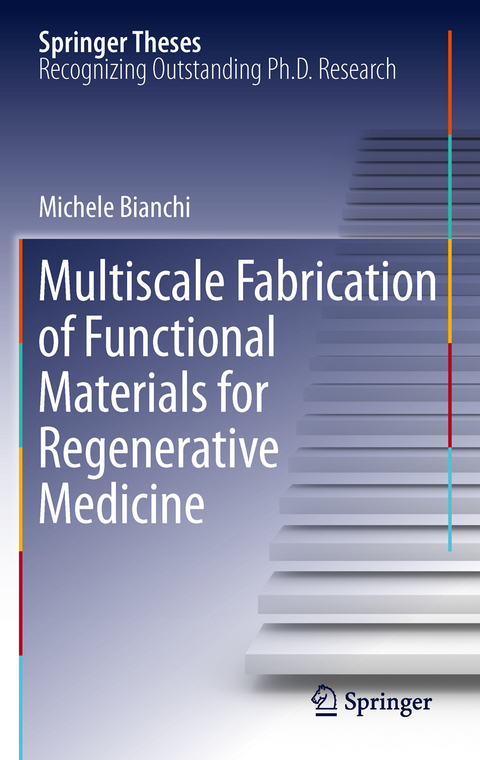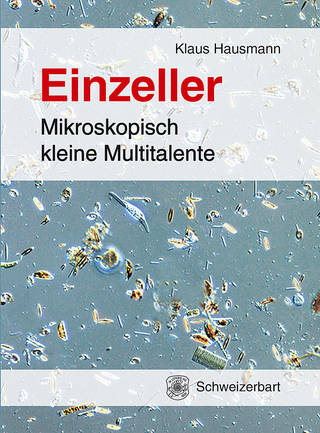
Multiscale Fabrication of Functional Materials for Regenerative Medicine
Seiten
2013
Springer Berlin (Verlag)
978-3-642-27026-0 (ISBN)
Springer Berlin (Verlag)
978-3-642-27026-0 (ISBN)
This book shows that different kinds of signal - chemical, topographical and electrical - can be arranged in a highly controlled way. Using unconventional fabrication techniques, the text uses scale lengths ranging from several micrometers to a few nanometers.
Regenerative medicine demands new concepts and fabrication tools to improve our common knowledge about cell-cell and cell-environment interactions. In this work, Michele Bianchi shows that different kinds of signals, such as chemical, topographical, and electrical signals, can be arranged in a highly-controlled way. Furthermore, Michele uses scale lengths ranging from several micrometers to a few nanometers, through the employment of unconventional fabrication techniques. For each signal, Michele chose properly designed materials and fabrication methods. The external signals are capable of controlling cell adhesion and growth, opening the way for a systematic investigation of the environmental features affecting cell behaviour.
Regenerative medicine demands new concepts and fabrication tools to improve our common knowledge about cell-cell and cell-environment interactions. In this work, Michele Bianchi shows that different kinds of signals, such as chemical, topographical, and electrical signals, can be arranged in a highly-controlled way. Furthermore, Michele uses scale lengths ranging from several micrometers to a few nanometers, through the employment of unconventional fabrication techniques. For each signal, Michele chose properly designed materials and fabrication methods. The external signals are capable of controlling cell adhesion and growth, opening the way for a systematic investigation of the environmental features affecting cell behaviour.
Dr. Michele Bianchi, University of Bologna, CNR-Institute of Nanostructured Materials (ISMN).
Introduction.- Experimental Techniques.- Stable Non-Covalent Functionalization Of Teflon-AF (Chemical Control).- Multiscale Patterning Of TiO 2 For Cell Growth Control (Topographical Control).- Control Of Neural Cell Adhesion On 3D-SWCNT (Electrical Control).- Lithographical Controlled Etching (Appendix).
| Erscheint lt. Verlag | 27.11.2013 |
|---|---|
| Reihe/Serie | Springer Theses |
| Zusatzinfo | XVI, 92 p. |
| Verlagsort | Berlin |
| Sprache | englisch |
| Maße | 155 x 235 mm |
| Gewicht | 177 g |
| Themenwelt | Naturwissenschaften ► Biologie ► Zellbiologie |
| Naturwissenschaften ► Chemie ► Analytische Chemie | |
| Technik ► Maschinenbau | |
| Schlagworte | Conclusions • Control of Neural Cell Adhesion on 3D-SWCNT • Lithographically Controlled Etching (Appendix) • Multiscale Patterning of TiO2 for Cell Growth Cont • Multiscale Patterning of TiO2 for Cell Growth Control • Nanotechnologies and Nanofabrication • Regenerative medicine • Stable-Non Covalent Functionalization of Teflon-AF |
| ISBN-10 | 3-642-27026-3 / 3642270263 |
| ISBN-13 | 978-3-642-27026-0 / 9783642270260 |
| Zustand | Neuware |
| Informationen gemäß Produktsicherheitsverordnung (GPSR) | |
| Haben Sie eine Frage zum Produkt? |
Mehr entdecken
aus dem Bereich
aus dem Bereich
mikroskopisch kleine Multitalente
Buch | Hardcover (2024)
Schweizerbart'sche, E. (Verlag)
29,90 €


